Living in a climate where you can landscape with palm trees offers many opportunities to beautify your home in a unique way. Palm trees often give the feeling of being on a sunny vacation without having to leave your home.
Palm trees are tall, slender trees with a distinctive crown of feathery or fan-like fronds. Their trunk is often smooth and unbranched, with a distinctive bulge at the base. Some species have spiky fronds, while others have more delicate, graceful fronds that sway gently in the breeze, and their leaves are usually a rich green and grow directly from the trunk’s top.
In the right conditions, many species of palm trees produce bright, showy flowers and fruit. From dwarf varieties like the Dwarf Palmetto Palm to the magnificent Royal Palm, you have many options to make your landscape magnificent.
Florida has a number of palm tree varieties that grow well in the state, but you don’t need to live in Florida to grow these varieties of palm trees. However, you do need to live in USDA Agricultural zones 7 to 9, and if you want coconut palms, you must live in zone 10a.
Landscaping With Palm Trees
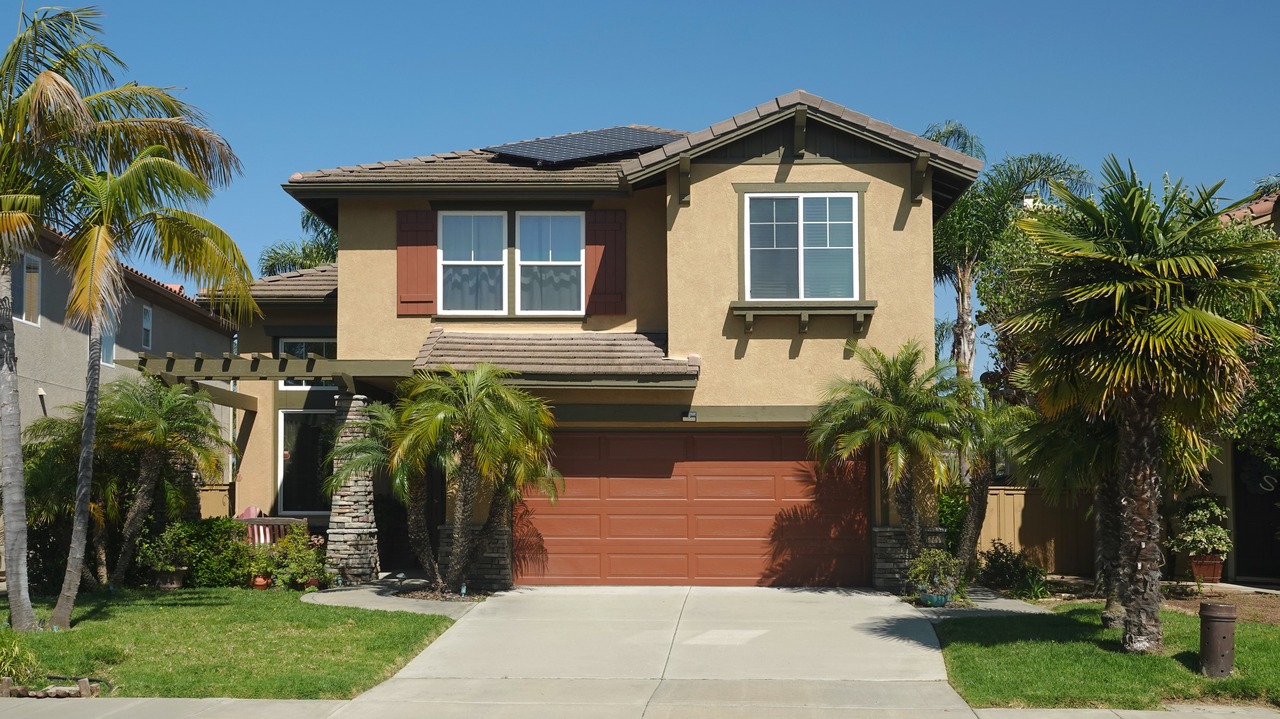
Image Credit: Shutterstock.
Landscaping with palm trees can add a touch of tropical beauty to any outdoor space. Whether you live in a hot, humid climate or just want to bring some vacation vibes to your backyard, palm trees are a versatile and attractive option for landscaping. With a wide variety of species, a palm tree fits every garden style and need.
You can plant a single palm tree as a focal point in your landscaping or plant them in groupings. Alternatively, you can use different varieties for different sizes, textures, and visual displays. All it takes is a little planning and some imagination.
Why Group Palms
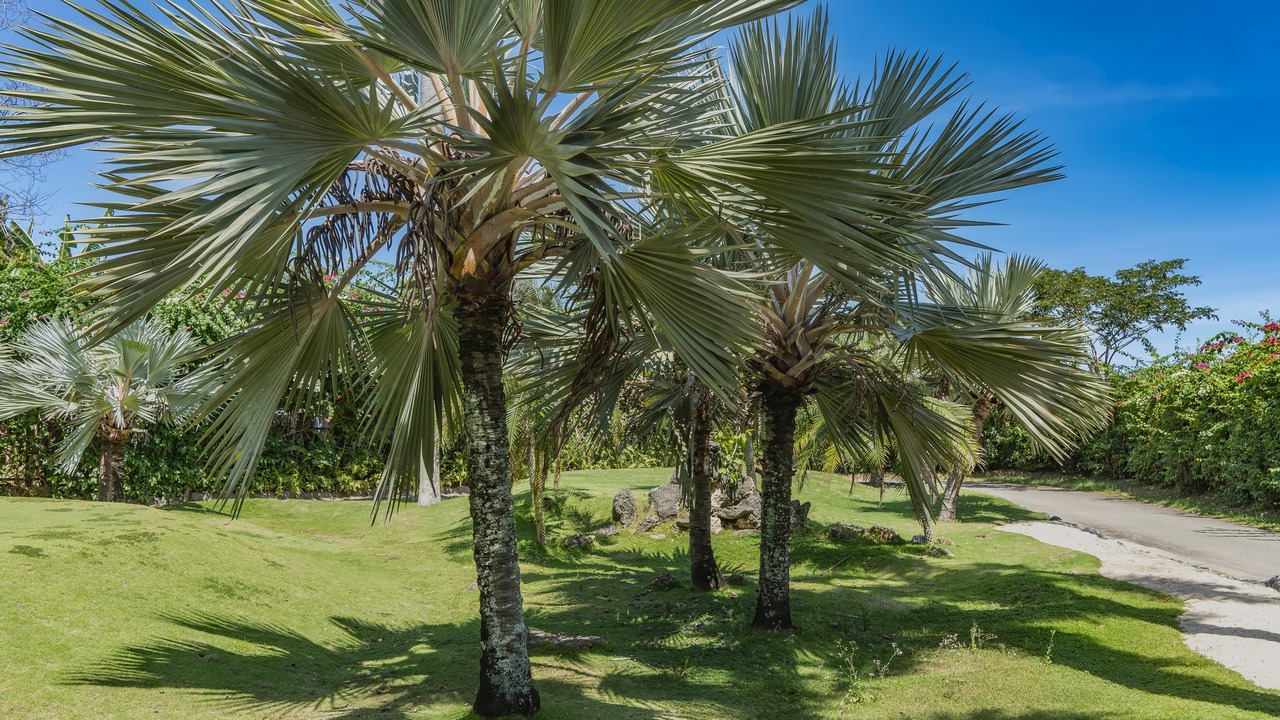
Image Credit: Shutterstock.
Small or tall, palm trees work well alone in your landscape or in a collection with one or two other palms. Any palm tree can be planted in a grouping for visual impact. However, placing two or three trees together gives them a broader reach when they mature.
Covering a larger area with foliage can help you keep the sun where you don’t want it and shade where you do.
The extra-expensive covering of a palm tree grouping can help you create shady areas and add visual impact to your landscape. You can use any palm tree in a bunch, and smaller varieties are started with three plants in a pot that may intertwine as they grow. Shorter palms can even be planted at the base of larger varieties for added texture and color.
Date Palms (Standard and Dwarf)
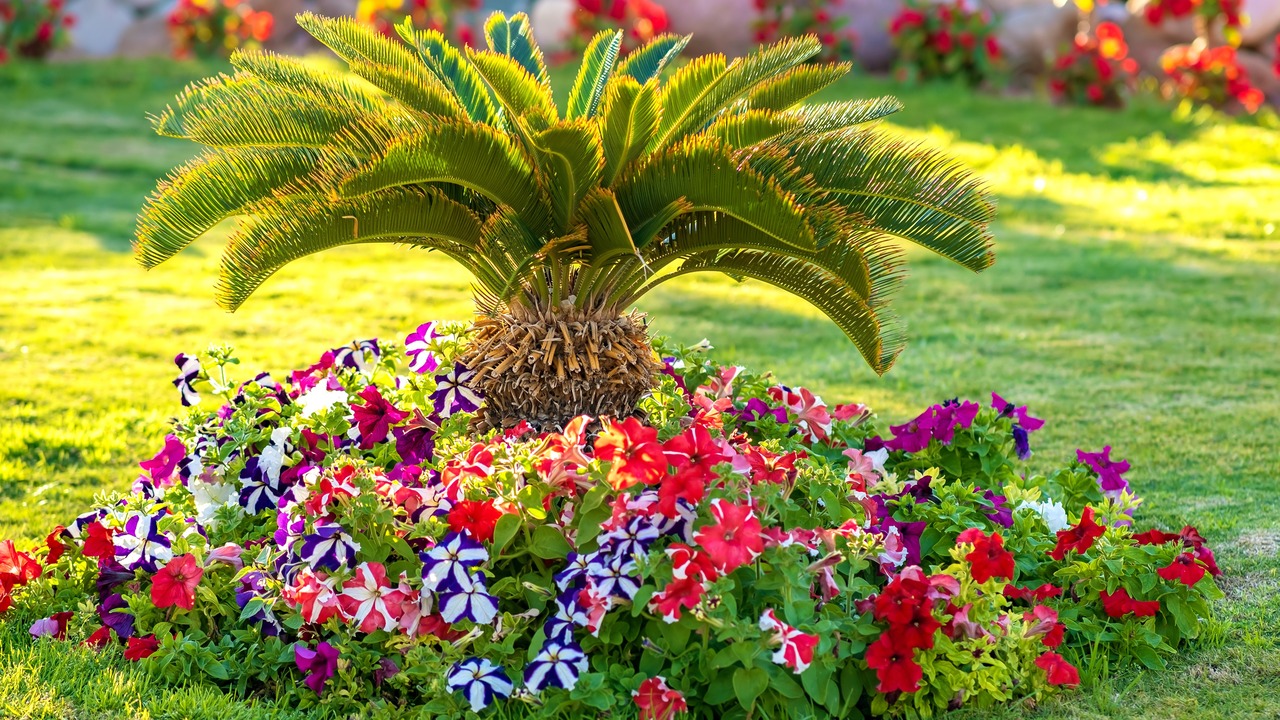
Image Credit: Shutterstock.
Did you know that dates come from date palms? They’re an excellent addition to desserts and entrées alike. They can be harvested when fresh and then dried for later use. So, when you plant a date palm, you have beautiful landscaping, but also a handy food resource, too.
It would make sense to plant dwarf varieties of the date palm, not the full-size type, which can reach 100 feet high, unless you have space for such a giant species.
Reaching a size at maturity of up to 12 feet, the dwarf date palm will begin producing fruit between four and eight years of age. The larger variety follows the same pattern and will produce fruit before reaching its monstrous height.
Like the Dwarf Date Palm, the larger variety takes four to eight years before bearing fruit.
Coconut Palms as Landscaping
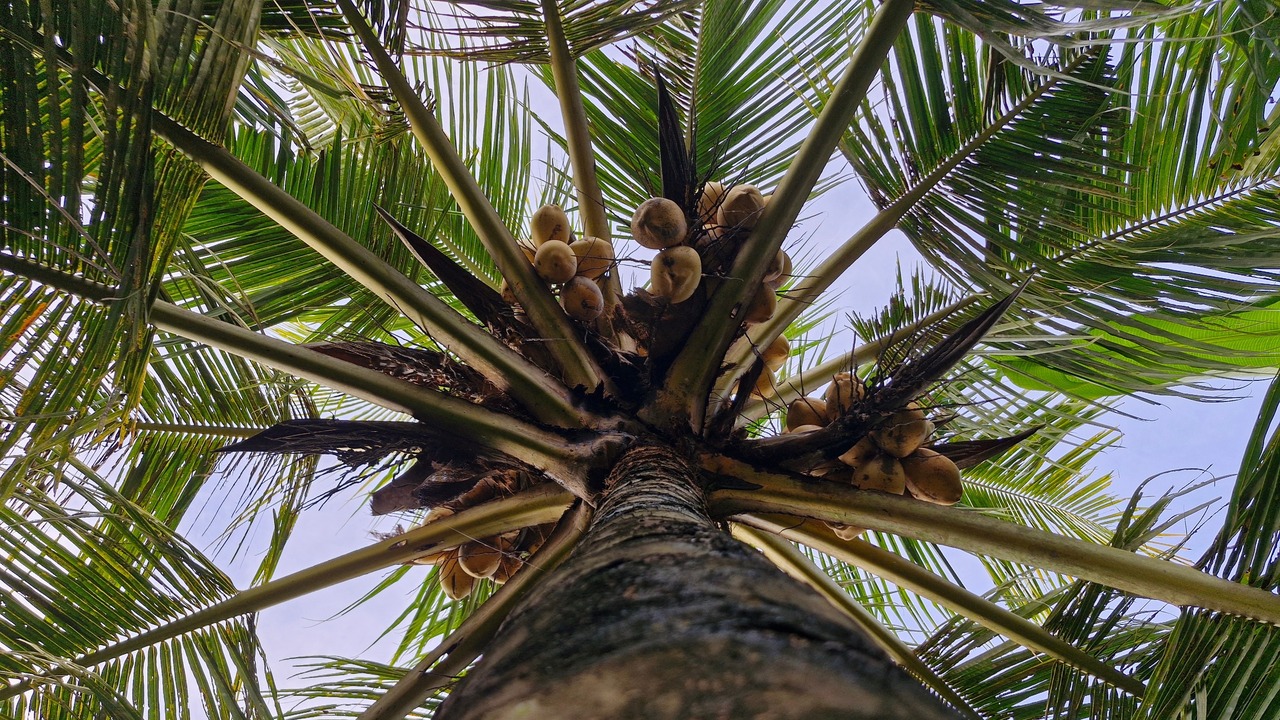
Image Credit: Shutterstock.
Native to the tropics of the Western Pacific, coconut palms have been imported to the United States and elsewhere around the globe. However, they grow well only in USDA hardiness zone 10A. Therefore, coconut palms are predominantly grown in Florida when grown in the United States.
The coconut palm can only handle short cold snaps that stay above freezing. Due to their size, one would need a vast greenhouse to grow a coconut palm indoors.
The coconut palm is one of the tallest varieties grown and can reach 100 feet high. So, plant your tree now if you want a coconut, within the next decade, because it takes a Coconut Palm eight to ten years to produce fruit.
Cabbage Palms or Saw Palmettos?
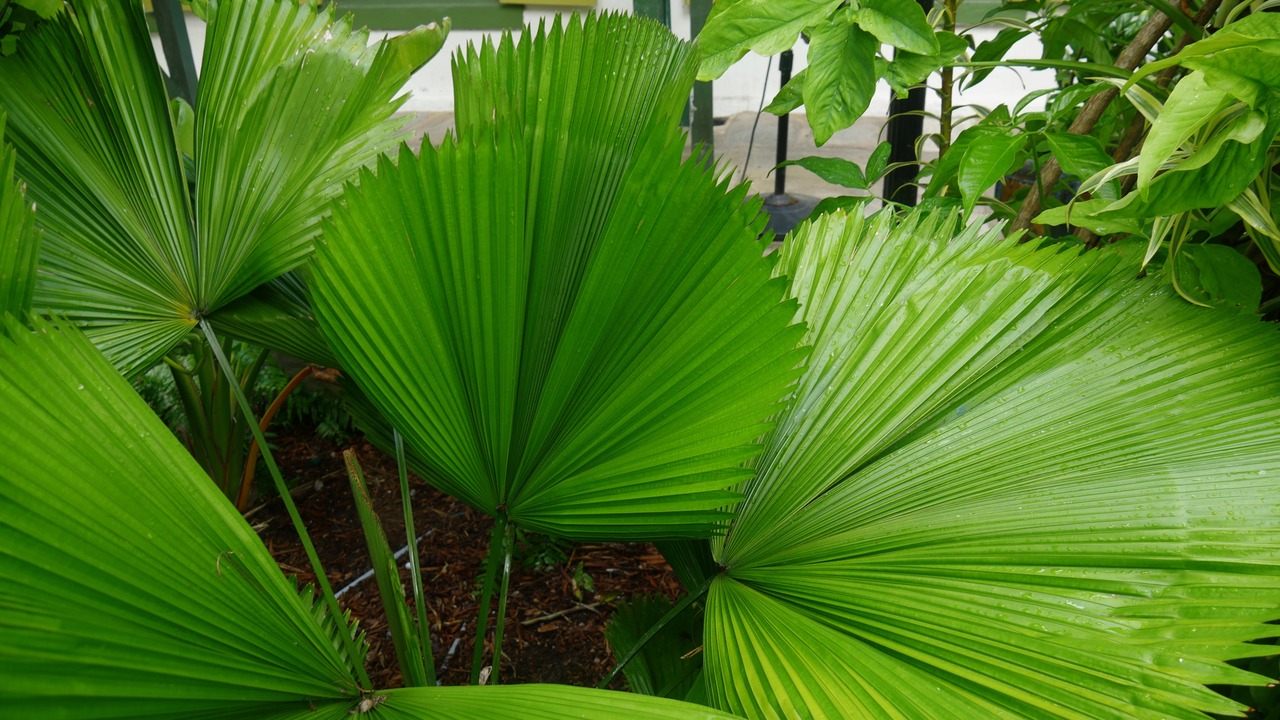
Image Credit: Shutterstock.
Although they may have a different name, the Sabal Palm is Florida’s state tree and is locally called swamp cabbage. Yet, in South Carolina, a similar tree is called the Cabbage Palm.
Whatever you call it, food can be derived from a cabbage palm in two ways.
Getting to the palm’s heart of edible, cabbage-like insides requires taking a tree to the ground. (This practice is illegal in Florida unless you are on private land). However, the Sable Palm produces flowers in mid-summer, yielding plump purple fruit.
Although foxes, squirrels, and birds love the fruit of the Sabal Palm, Native Americans depended on it for food.
Size Matters with Palm Trees
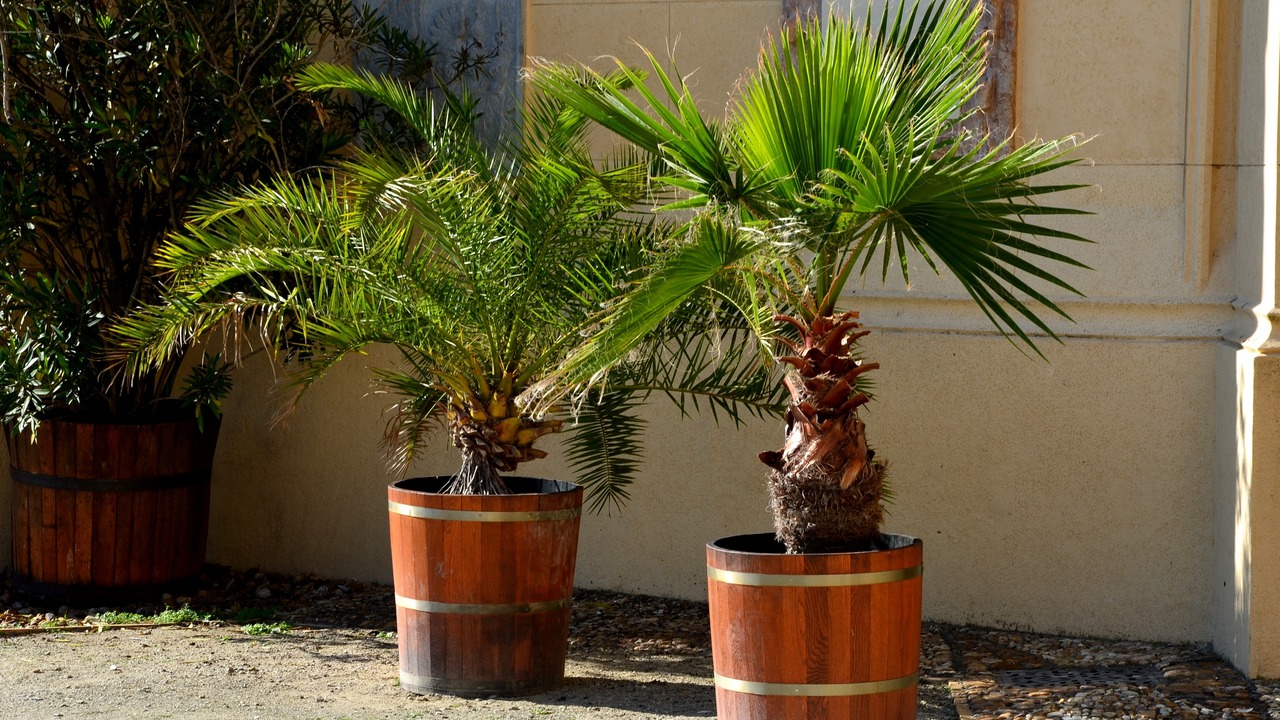
Image Credit: Shutterstock.
As with any landscaping project, you need to consider the size of the palms you are planting and where they are going. As they grow, your palm may become too large for the space you cultivate once they mature.
Consider the size your palm tree will become once fully grown, not its size when you plant it.
The smallest palm tree, the Dwarf Palmetto, reaches a height of seven to ten feet when fully grown. The three- to four-foot-long fronds (branches) of the Dwarf Palmetto Palm give them a bushier appearance than other palm trees.
The Royal Palm, on the other hand, is majestic and can reach heights of 80 feet or more. In addition, they have a notable bright green stretch of the trunk, just below the fronds. This feature makes them distinctive from other palm tree varieties.
Different Types Of Palm Trees
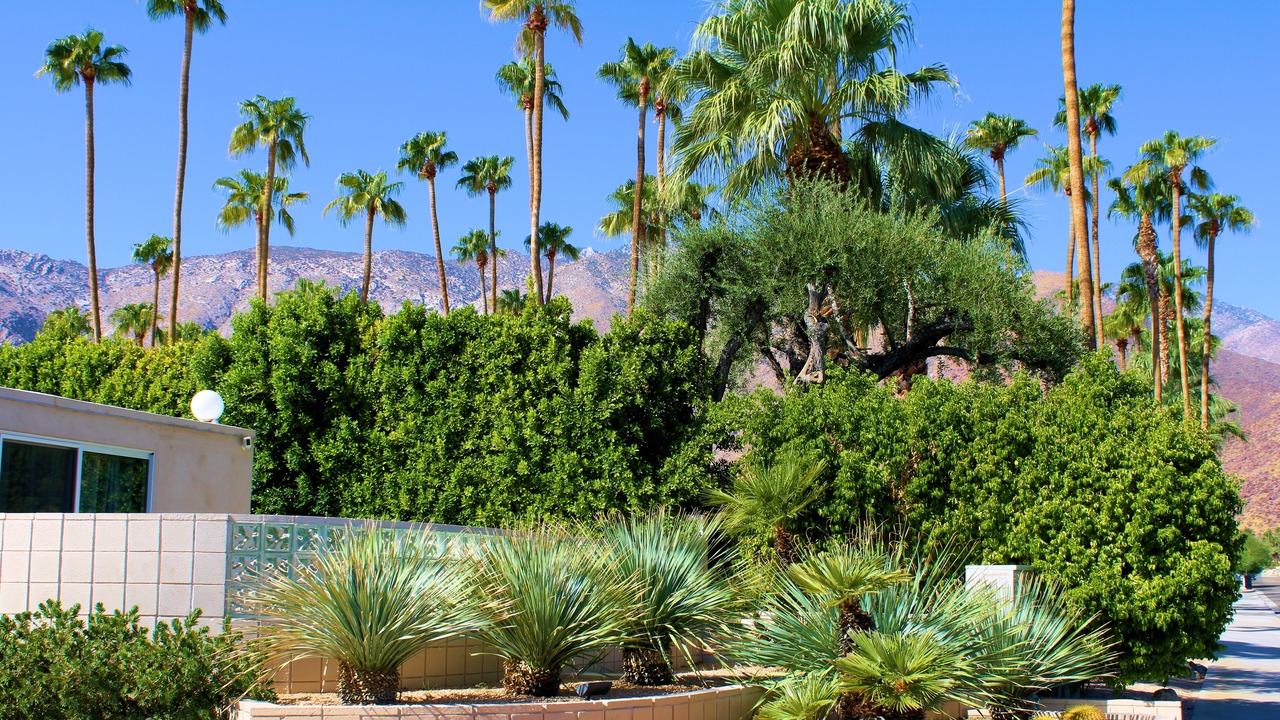
Image Credit: Shutterstock.
Besides the types of palms we discussed earlier, which can all bear food, there are still many other types of palms. Some of them include the African Oil Palm (Elaeis guineensis), the Fishtail Palm (Caryota spp.), the Royal Palm (Roystonea regia), the Chinese Fan Palm (Livistona chinensis), and many others.
Palm trees also come in different shapes, including canopy palms, fan-shaped palms, feather palms, and needle palms, also known as porcupine palms. With so many types of palms to chose from, there is probably a palm tree that will fit your landscaping needs, as long as you live in the right climate.
Consider Your Options
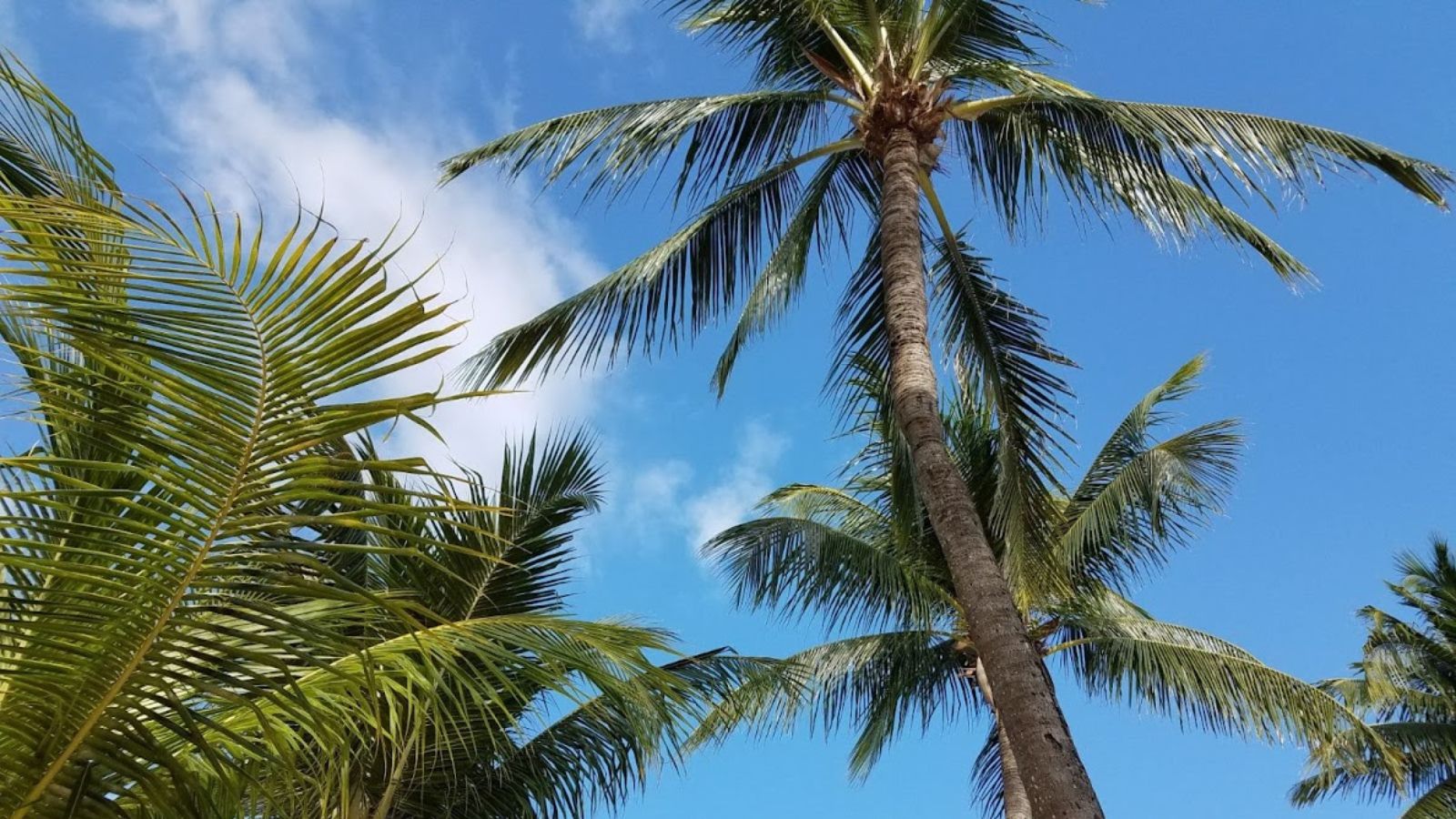
Image Credit: Shutterstock.
Whether you are landscaping a small lot or 40 acres, there is a wide variety of palm trees to choose from. As you see, some are squat, while others will reach for the clouds when they mature.
What you need, though, is what appeals to you, and the more land you have, the further you can take your vision of living amid an oasis.

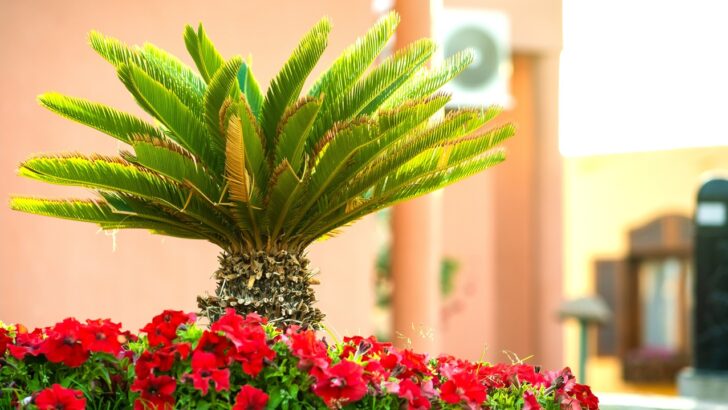

10 Simple Front Yard Landscaping Ideas
Tuesday 31st of January 2023
[…] you live in Florida, Arizona, or another warm state, try landscaping with palm trees, and enjoy some fruit as a result […]
5 Easy Edible Landscaping Ideas
Tuesday 31st of January 2023
[…] a wet spot in your garden? Grow some stinging nettle. Or, if you live in a warm state, plant some palm trees in your landscape, and get coconuts, dates, and other fruits, depending on which type of palm tree to […]